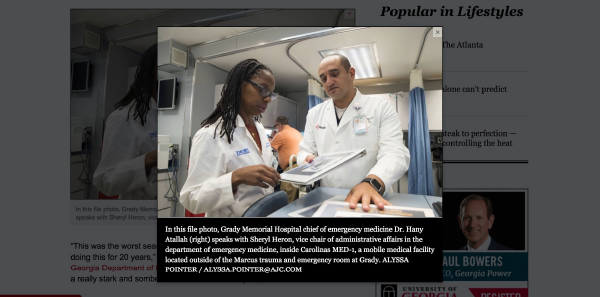
It was surprising to receive an email advising me that I had appeared on the front page of the Atlanta Journal Constitution (AJC), the local newspaper in Atlanta. Without reading the article, which addressed the end of the flu crisis in Georgia, there I was with my colleague and friend Hany Atallah, MD. There was an image of Dr. Atallah and me. I was advised the image was quite reflective of the seriousness of the flu season and the flu season finally coming to a close. What I didn’t see, which my husband immediately brought to my attention, was the verbiage underneath the photo. My husband simply stated, “Now that’s unconscious bias right there on the front page.” Puzzled, I didn’t understand what he meant. However, there it was. My colleague and friend Hany was noted as Dr. Hany Atallah, and I was noted as Sheryl Heron, not Dr. Sheryl Heron (see Figure 1).
Explore This Issue
ACEP Now: Vol 37 – No 07 – July 2018As one who has spent a large part of my professional life giving local and national presentations on unconscious bias, there it was staring me in the face. As an African-American woman, full professor in emergency medicine, vice chair as the article noted, and assistant dean, why wasn’t I afforded the title of doctor as my male colleague was?
The data are clear on gender and racial bias, with more studies addressing this reality each day. These biases contribute to microaggressions and the continuous need for women and underrepresented minorities (URMs) to feel they have to prove themselves.
My colleague Michelle Lall, MD, MHS, president of the Academy for Women in Academic Emergency Medicine (AWAEM), and I were co-authors on a paper addressing the current status of gender and racial/ethnic disparities in academic emergency medicine physicians.1 The paper revealed that gender and URM disparities exist and persist as it relates to salary and rank among full-time US academic emergency medicine faculty. There are also gender and URM disparities in rank and leadership positions. Women earn less than men regardless of rank, clinical hours, or training. There are multiple studies showing that women physicians lag behind their male counterparts in compensation, research funding, leadership opportunities, and achievement.2–9 These trends have been consistent over the last 15 to 20 years and are not improving.
Pages: 1 2 | Single Page




No Responses to “When Unconscious Bias Hits Home (Again)”